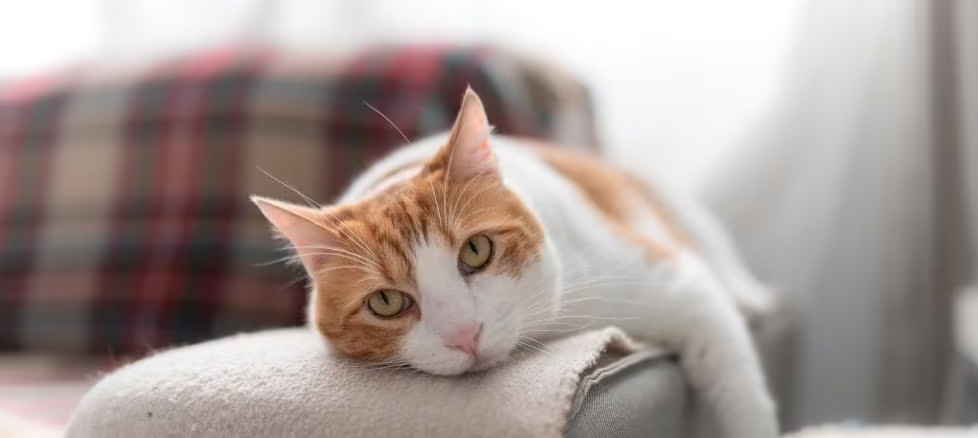How to Tell If Your Cat is Stressed
Cats are known for their independence and stoic nature. Unlike dogs, they don’t always wear their emotions on their sleeves—or whiskers. However, stress in cats is more common than many pet parents realize, and chronic stress can lead to serious behavioral and health issues. Understanding how to recognize the signs of feline stress and knowing what to do about it can go a long way toward ensuring your cat’s long-term wellbeing.
-
Why Do Cats Get Stressed?
Cats are creatures of habit. Even small changes in their environment or routine can throw them off balance. Common stress triggers include:
- Changes in the home – New furniture, renovations, or even a change in room layout can cause anxiety.
- New people or pets – A new baby, pet, or visitor can disrupt your cat’s sense of territory and safety.
- Lack of stimulation – Indoor cats especially may become bored or frustrated without enough toys or activities.
- Medical issues – Pain or illness can make your cat more irritable or withdrawn.
- Litter box issues – Dirty litter boxes or sudden changes in litter type can cause distress.
-
Signs Your Cat Might Be Stressed
Cats don’t always cry or bark when upset. They tend to show stress in more subtle (and sometimes confusing) ways. Look out for these common signs:
- Changes in Appetite
A sudden drop in appetite—or even overeating—can signal that something is wrong. Stressed cats may refuse food or eat less than usual.
- Hiding More Than Usual
If your cat is suddenly spending hours under the bed or in closets, it could be avoiding stressors in the environment.
- Inappropriate Elimination
One of the most frustrating signs for pet parents—peeing or pooping outside the litter box—is often stress-related. It can be your cat’s way of expressing discomfort or insecurity.
- Aggression or Irritability
A normally friendly cat may start hissing, scratching, or avoiding contact. Even gentle petting might trigger a reaction.
- Over-Grooming or Poor Grooming
Some cats cope by obsessively licking themselves, especially the belly and legs, sometimes leading to bald patches. Others may stop grooming entirely.
- Vocalization Changes
Some cats may meow more than usual, sounding distressed or anxious. Others may become unusually quiet.
- Compulsive or Odd Behaviors
Pacing, chewing non-food items, or constant meowing at doors or windows are often signs of mental stress.
-
What Can You Do to Help Your Cat?
The good news is that once you identify that your cat is stressed, there are several effective steps you can take to help them feel more at ease.
- Identify and Remove the Stressor
The first and most important step is identifying what’s causing the stress. Is it a new pet? Loud construction noises? A recent move? Once you pinpoint the cause, try to reduce its impact.
If you can’t eliminate the stressor (e.g., a new baby), focus on providing comfort zones for your cat.
- Create Safe Spaces
Cats need quiet areas where they can retreat and feel secure. Set up cozy spots with soft bedding, cat trees, or hiding boxes in low-traffic areas of your home.
Make sure each cat in a multi-cat household has access to its own food, water, litter box, and resting areas to avoid territorial stress.
- Stick to a Routine
Cats find comfort in predictability. Try to feed, clean litter boxes, and play at the same time each day. Avoid making multiple changes at once.
- Interactive Play
Playtime helps reduce stress, especially for indoor cats. Use wand toys, laser pointers, and puzzle feeders to simulate hunting and provide mental stimulation.
Aim for at least two 15-minute interactive sessions per day.
- Use Calming Products
There are several over-the-counter calming aids for cats:
- Pheromone diffusers and sprays (like Feliway) mimic natural cat pheromones and promote a sense of security.
- Calming collars release stress-reducing compounds over time.
- Supplements containing L-theanine, tryptophan, or valerian root may help naturally reduce anxiety.
Always consult your vet before starting supplements.
- Enrichment and Vertical Space
Provide scratching posts, climbing shelves, and window perches. Enrichment helps your cat feel in control and keeps their brain active, reducing boredom-related stress.
You can also rotate toys regularly to keep things interesting.
- Consult Your Veterinarian
If signs of stress persist despite your efforts, visit your vet. Underlying medical problems such as urinary tract infections, arthritis, or thyroid issues can cause or worsen stress.
In some cases, your vet may recommend short-term use of anti-anxiety medications or refer you to a feline behaviorist.
-
Stress in Multi-Cat Households
Multi-cat homes have unique stress dynamics. Some signs of stress in these households include:
- Increased fighting or chasing
- One cat consistently hiding or avoiding others
- Bullying at feeding or litter box areas
Use multiple litter boxes (one per cat, plus one extra), feed cats separately, and observe their body language during interactions. Consider separating cats temporarily if the tension is high.
-
In Summary
Cats may not always show their stress in ways humans immediately understand. But by learning the signs and taking proactive steps, you can greatly improve your cat’s quality of life.
Remember, a calm cat is a healthy cat. With patience, observation, and care, you can help your feline friend navigate stress and enjoy a peaceful, purring life by your side.
Share This Post

